E-commerce product descriptions are quintessential to driving purchases online. Good product descriptions have shown to attract more customers. Research shows that 87% of customers consider product content to be very important when choosing a product, and 50% have returned an item because it didn’t match the description.
Although product descriptions have been a necessity since the dawn of e-commerce, best practices have evolved. Cut-throat competition has pushed e-commerce companies to make the most of their product content. Here’s a lowdown of how best practices for product descriptions have evolved over time.
Evolution of e-commerce product descriptions
With online brands and retailers constantly looking to outdo one another to enhance the digital experience for customers, product descriptions have taken several forms. Here’s a quick peek into how far we have come:
Phase 1: Bite-sized descriptions
Product-related short format content was written with the objective to highlight features of a product allowing customers to quickly comprehend its USPs.

Source: Sumo
Phase 2: SEO-driven long-form descriptions
39% of all global e-commerce traffic comes from search. With more customers beginning their product research online, SEO-driven long-format product descriptions became crucial. Here, the focus shifted from just showcasing product features to maximizing product discoverability across the web.
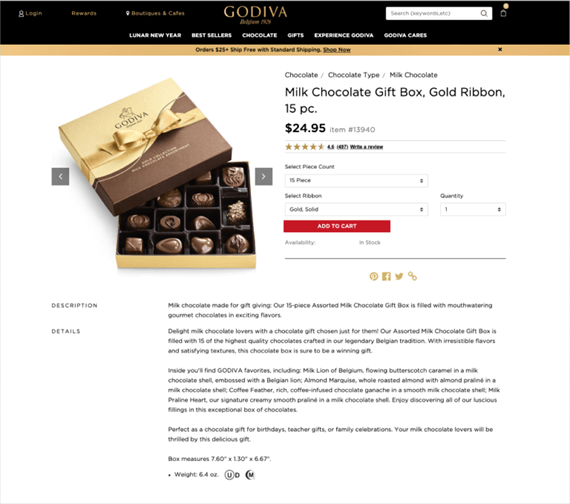
Source: Yotpo
Phase 3: Visually-rich A+ Content
As customer analytics grew popular, e-commerce platforms realized that while product descriptions were key to conversions, customers were not willing to read lengthy descriptions. The content had to be more visual.
A survey by Field Agent reveals that 83% of shoppers consider the product image to be the most crucial trigger in their buying decision. Such changes in shopping behavior gave birth to A+ content or visual content. This type essentially uses product images coupled with icons, infographics, and targeted SEO content allowing customers to understand the USPs of a product at a glance to drive quick conversions.
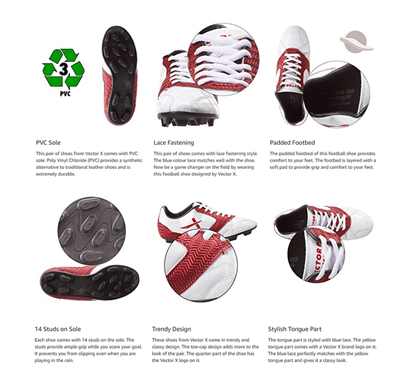
Phase 4: AI-driven product content
While visual content remains a predominant and preferred format, AI-driven product descriptions are quickly becoming the norm. Thanks to rapid advances in AI technology, companies can now quickly and cost-effectively take their products to the digital marketplace.
AI-driven product descriptions generally contain only text. They are especially useful in categories such as Fashion & Apparel, which have a high number of SKUs and variants and a short time-to-market (TTM). AI helps fast-track the cataloging process by creating product descriptions based on product images and data scraped from the web. Here’s an example.
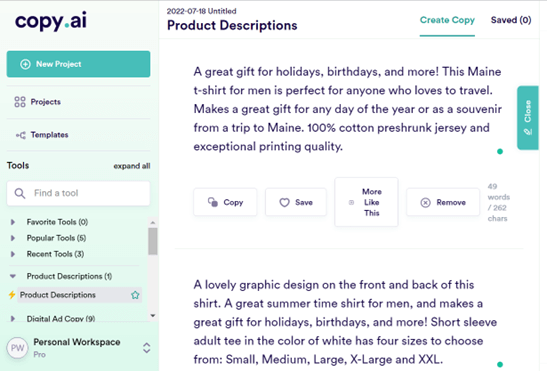
AI-driven content is still to grow competent for categories like electronics where the accuracy and context of the descriptions are highly critical. While AI-driven descriptions are cost-effective they are seldom unique as the ML models are trained based on publicly available data which leads to challenges around plagiarism.
Read more: Product content enrichment: all you need to know
Phase 5: Video walkthroughs
Reduced customer attention spans and information overload are compelling companies to look for more effective ways of communicating the USPs of products. The shift to short product videos has come into the foray allowing companies to communicate details of products across various contexts.
The primary way consumers discovered a brand they later bought from was through video ads. That’s why videos have gained significant importance in developing product descriptions. Also, AR simulations are where the market is headed and it would be interesting to see how this space shapes up.
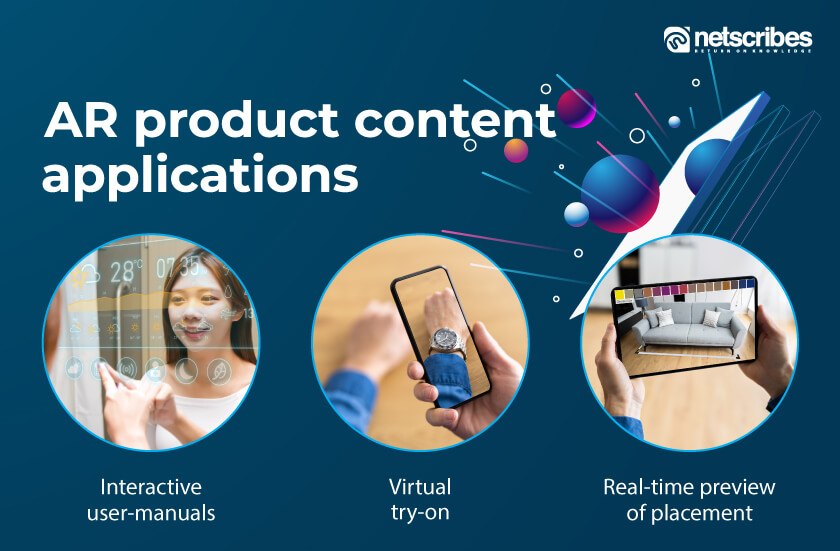
Best practices for creating visual product descriptions
- Ensure high-quality product images are used to highlight USPs
Successful brands and marketplaces use multiple image angles to showcase products in its entirety.
- Help customers immediately understand complex features
Especially with electronics items and furniture, using icons and demarcations enable buyers to quickly process details about a product enabling speedy, yet informed decisions.

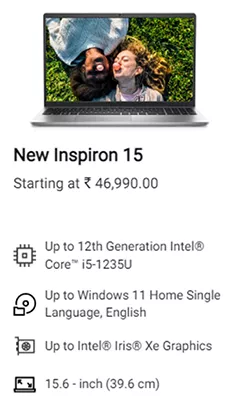
- Create unique, crisp content highlighting the most relevant product features and benefits
Make your content quickly scannable by using short paragraphs, headers, and bullet points.
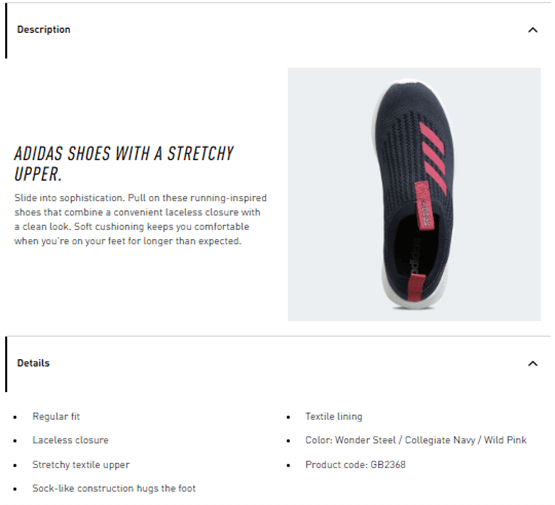
Source: Adidas
- Let your product content tell a story
Use this strategy when differentiating between products is challenging, such as apparel and cosmetics.
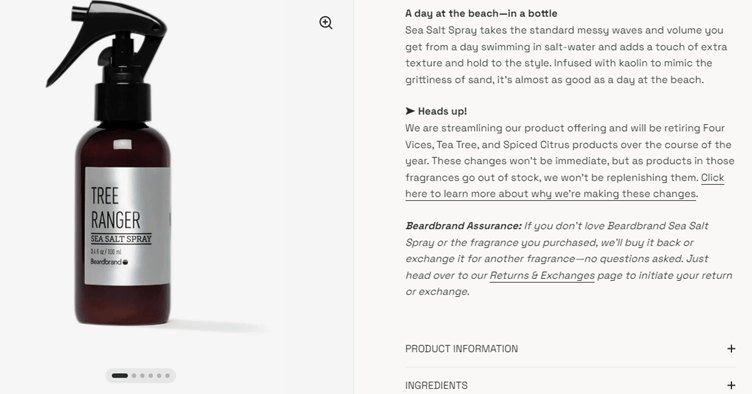
Source: BeardBrand
- Adapt your writing style to buyer personas
Creating product descriptions that speak to specific buyer personas will drive greater impact.


- Localize. Target specific buyers through regional language-based product content
75% of consumers surveyed in the US revealed that they would spend less on products that did not offer local language support. Speak the language of your customers. With this one practice, companies can expand their market share to audiences across different locations, age groups, and personas.
- Optimize descriptions for SEO to improve on and off-site product searches
Use tools like Google’s Keyword Planner to identify keywords your customers are using to search for your product. Optimizing your content regularly with relevant keywords can help improve your return on ad spends (ROAS).
- Ensure information accuracy by using and verifying information from brand websites
This is extremely crucial as your website’s credibility depends on the quality and correctness of the product information you put out there.
- Include customer reviews or testimonials to further validate a product’s credibility
Research shows that 71% of customers consider recency when reading reviews. The biggest portion of shoppers (34%) look for reviews for a product that is between a week and a month old.
- Avoid plagiarism as it impacts discoverability on search engines
One way to do this is to leverage multiple information sources while drafting your content and then rewriting it to give it a unique tone of voice. Also, using a plagiarism checker can help in quickly detecting and fixing plagiarised product content.
- Ensure product images do not violate copyrights
When in doubt, source your images directly from the manufacturer. Creative Commons is a good resource, as you can query multiple image search engines for photos that can be used for commercial purposes.
As a leader in digital commerce content for over two decades, Netscribes supports retailers and brand manufacturers in accelerating their digital storefronts. If you need help with developing high-quality product descriptions for your website, we can help. Contact us to know more.






